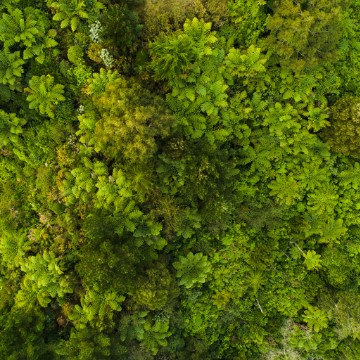2 things to keep in mind when identifying truly sustainable and eco-friendly alternatives in the food packaging industry
Part 1: Analyse impact of production and consumption of feedstock to the environment
It is crucial to look at the carbon footprint of different packaging materials to understand the overall environmental impact. As plastic packaging is made from petrochemicals by ‘cracking’ fossil fuels and natural gases’, it is clear how environmentally damaging and unsustainable some choices are.
Other material alternatives such as bioplastics, made from agricultural products such as corn, bring up different concerns. It is estimated that about half of world’s corn production is required as feedstock for bioplastic to be able to replace fossil fuel-based plastic consumed globally. The ongoing stress of food security and issue of agricultural land use conservation hints at the un-sustainable aspect of bioplastics.
Thought paper was the greenest solution? Think again!
The rising popularity and availability of paper packaging show it has become the sustainable alternative of choice. However, life-cycle analysts show that paper packaging production has an equal if not higher carbon footprint than conventional single-use plastic packaging. Metrics indicate that paper products also have a higher water footprint than its alternatives due to the intense cleaning process of the feedstock. A significant amount of paper packaging is not recycled and manages to end up in landfills. Processing of paper also includes using harsh chemicals which have resulted in paper mills becoming one of the biggest polluters of water, especially in the United States. Sometimes, it’s difficult to understand what environmental scientists and researchers are trying to convey, so here we ‘let Lee explain’ in simple terms what is wrong with the current paper product industry.
Rangoon Ltd addresses these concerns through Sustainoware, a truly sustainable line of food packaging made from agricultural and natural waste. One of the aims of developing Sustainoware was to be able to reduce waste by converting it into feedstock. Naturally fallen areca palm leaves are traditionally disposed of via incineration, a remarkably high carbon emitting process. We at Rangoon Ltd have found innovative solutions by simply processing these leaves into disposable dinnerware. This is all done through a simple moulding process, and in a 100% natural and chemical free way! Another line of Sustainoware products promotes other materials of food packaging made from recycled bamboo fibres collected from factories and non-edible cassava. These solutions not only help mitigate waste, but they have also proven to have very low carbon footprints, as further explained on our website.
Part 2: Consider impact to the environment when the packaging is disposed of and how effective the disposal techniques are
Polyethylene terephthalate on commonly used PET plastics remain in the environment for about 450 years. In addition to depriving the world of its natural resources in a carbon intensive way, this product was observed to be a threat to the world’s biodiversity. We have now managed to be find it inside humans as well. “Microplastic pollution has been detected in human blood for the first time, with scientists finding the tiny particles in almost 80% of the people tested.” (Guardian) This only re-enforces the urgency for a truly environment-friendly solution.
A significant number of bioplastics tend to be processed into the same PET plastic that is unable to biodegrade. Others such as PLA plastics have been proven to be biodegradable. This may sound promising at first, however, to achieve this, collected PLA plastics require to be processed in special industrial composting plants under specific environment conditions. This poses greater challenges, including highly sophisticated waste manage systems to not only distribute plastics to different facilities, but also find a practical and effective way to distinguish between different types of plastic in waste disposals.
Paper packaging products are better in biodegrading than plastic alternatives, however the additional chemical additives in recycled paper does not make it 100% biodegradable. The breaking down of this product usually requires special industrial conditions. On the other hand, 100% natural paper packaging will be able to compost naturally, however, these are rare to find due to their decreased functionality and higher cost. In addition, paper production forces increased stress on to the environment through increased deforestation.
Sustainoware addresses these concerns by supplying products that are home compostable. This means that not only will the material fully breakdown in a short timeframe, but it will do this in environments achievable at home in your backyard. This is possible due to the all-natural, chemical-free composition of the packaging.
Sustainoware packaging does not stop there, one of the product lines allows for upcycling. Sustainoware’s bamboo fibre and cassava starch tableware can be used for DIY arts and craft projects after its initial use as food packaging. Create home-made lamps, piggy banks or anything that comes into your imagination! Sustainoware bowls can be used as plant pots which can directly be planted in the soil, as they will compost eventually into the ground. Find more creative ideas on our website!
To find out more about Sustainoware by Rangoon ltd, please visit www.rangoon.uk. Email me at pbhasin@rangoon.uk) or call (+44) 7444241567.









